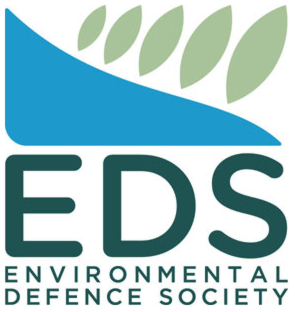New Report Maps Otago’s Exposure To Natural Hazards
A new report released by the Otago Regional Council (ORC) marks a major step forward in understanding how communities across Otago are exposed to natural hazards such as flooding, earthquakes, landslides, and tsunami.
The Otago Region Natural Hazards Exposure Analysis is the region’s first comprehensive assessment of where people, buildings, and critical facilities may be situated in areas potentially affected by one or more natural hazard types.
“This analysis provides a regional-scale, data-driven snapshot that will help guide how we prioritise future resilience projects and hazard investigations,” ORC’s Manager Natural Hazards, Dr Jean-Luc Payan says.
The report covers the entire Otago region and assesses exposure to nine key natural hazard types using regional-scale mapping and modelling datasets. It estimates the number of people, buildings, and critical community facilities (such as hospitals and emergency services) located in areas which may be exposed to natural hazards.
“This work is not about predicting when an event might happen,” Dr Payan explains. “It’s about identifying where exposure exists so we can make smarter decisions about resilience, planning and investment.”
Following presentation to council, work can begin prioritising areas and hazard types of most concern, working with communities, city and district councils to develop strategies to reduce risk.
Key Findings
- River and lake flooding and liquefaction hazard types have the greatest exposure, with over 30,000 people and buildings potentially exposed to each hazard process.
- Of the urban areas in the region, Dunedin City has the highest overall exposure, particularly to flooding, liquefaction and seismic hazards.
- The Queenstown, Wanaka and Dunedin City urban areas have a relatively high exposure to slope stability hazards, such as landslides and alluvial fans.
- Coastal hazards, such as tsunamis and storm surges, have a lesser exposure overall (about 500 people and 1,100 buildings), and mainly in the Dunedin City and Clutha district.
- There were 90 critical community facilities identified in the region, with the highest exposure of these facilities being for flooding and liquefaction hazard types.
- The full technical report and some supporting material are available to view online at orc.govt.nz/naturalhazardexposure

How the Data Will Be Used
The findings provide a critical foundation for ORC’s natural hazards prioritisation programme, scheduled to begin in the 2025/26 financial year. The information will also support:
- Long-term planning and land-use decisions.
- Emergency management and regional policy development.
- Infrastructure management and resilience-building projects.
The analysis will assist ORC and partner organisations, including Emergency Management Otago and territorial authorities, to focus natural hazard management efforts where they are most needed.
The natural hazards data used comes from ORC’s region-wide natural hazards mapping, developed using interpretation from aerial imagery and topography, and modelling. While it offers broad-scale insights, it does not replace local-scale studies or individual property hazard or risk assessments.
No new natural hazards investigation was completed for the exposure analysis project, the analysis was based on ORC’s existing natural hazards mapping data, which has been compiled over many years and is publicly displayed on the ORC Natural Hazards Portal.
“This is a living dataset,” says ORC Senior Natural Hazards Analyst, Tim van Woerden.
“As we gain access to more detailed information, we’ll continue refining the analysis.”
Glossary: making the terms clear
To avoid confusion or alarm, here are simple definitions of some key terms used in the report:
Exposure: means a person or building is located in an area where a hazard process might occur — not that they are guaranteed to be affected.
Natural hazard: a natural process or event (like a flood or earthquake) that could cause harm to people or property.
Liquefaction: a process where ground made of loose, wet soil can behave like a liquid during strong earthquake shaking.
Alluvial fan: a fan-shaped landscape feature where debris and/or floodwaters from a hillside can wash out and spread during heavy rain events.
Critical community facility (CCF): buildings that are key to post-disaster response, such as fire stations, police stations, hospitals or emergency operation centres.
High exposure: a community area has a higher number or proportion of people or buildings located within a mapped hazard area — not that an event is imminent.
“These terms may sound technical or worrying,” Mr van Woerden adds, “but it’s important to remember this analysis is about where we focus effort to reduce exposure — not about predicting events or sounding alarms.”
What’s next
ORC will now use the findings of the natural hazard exposure analysis as one tool to help identify and prioritise the areas most exposed for further study and investment. The natural hazards prioritisation workstream is scheduled to conclude by mid-2026. Updates to the exposure report will be made as more refined data becomes available.


 Gordon Campbell: On Wealth Taxes And Capital Flight
Gordon Campbell: On Wealth Taxes And Capital Flight Department of Conservation: DOC Reveals Surprising Toilet Paper Stats
Department of Conservation: DOC Reveals Surprising Toilet Paper Stats NZ Government: Consultation Opens On Sweeping Overhaul Of Primary Sector Regulations
NZ Government: Consultation Opens On Sweeping Overhaul Of Primary Sector Regulations Manaaki Whenua Landcare Research: How Have Our Garden Birds Been Tracking Since 2014?
Manaaki Whenua Landcare Research: How Have Our Garden Birds Been Tracking Since 2014? NZ Labour Party: Govt Driving Away Kiwi Innovators And Scientists
NZ Labour Party: Govt Driving Away Kiwi Innovators And Scientists PSA: Govt Funding Squeeze Sees DOC Propose Cutting 84 Roles
PSA: Govt Funding Squeeze Sees DOC Propose Cutting 84 Roles NZ Police: Police Statement On Retail Crime
NZ Police: Police Statement On Retail Crime


